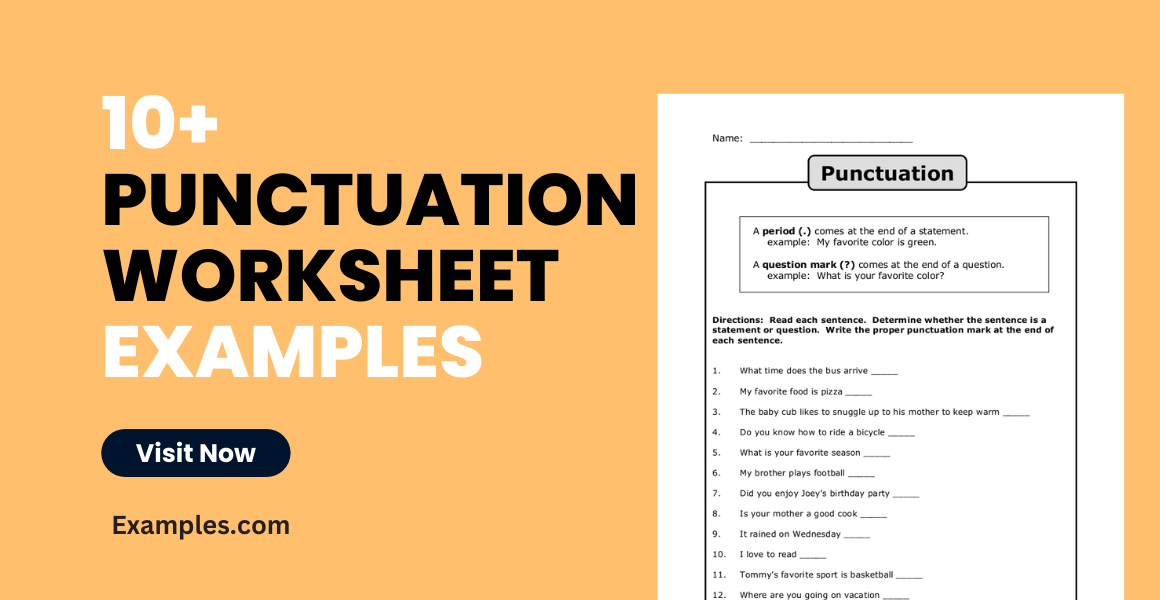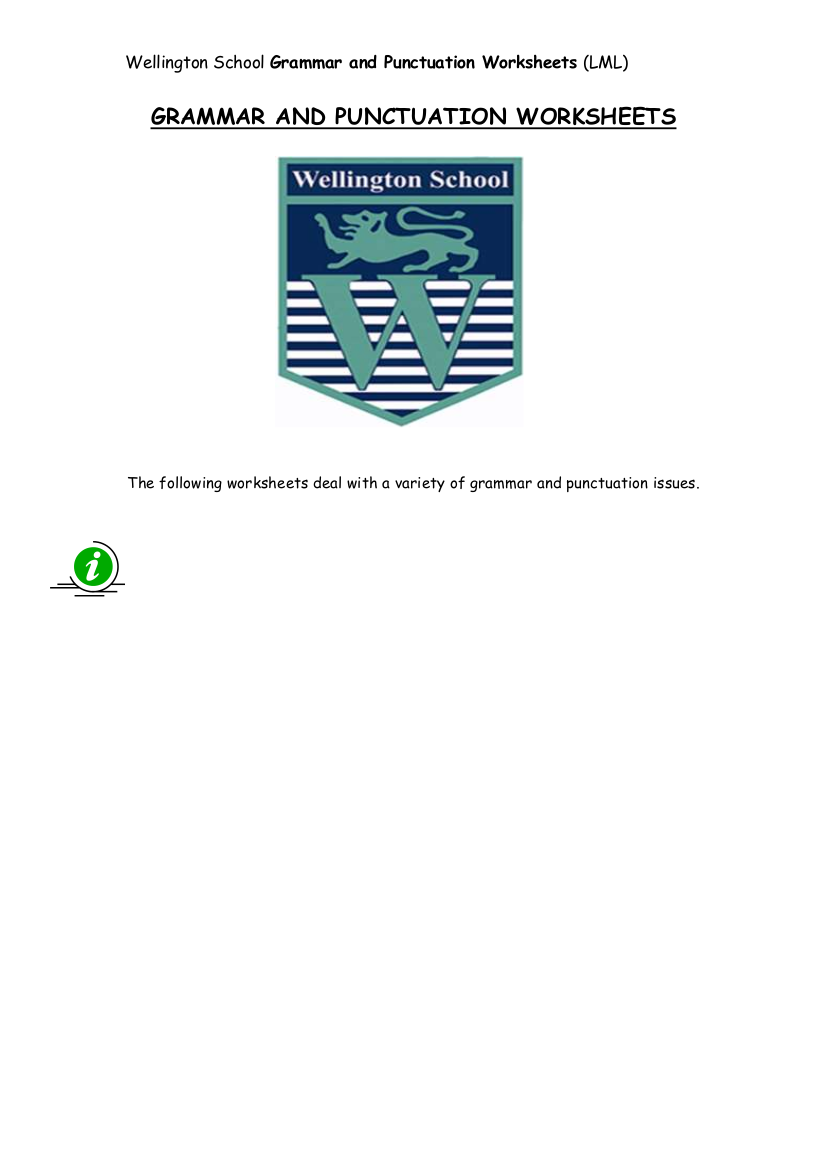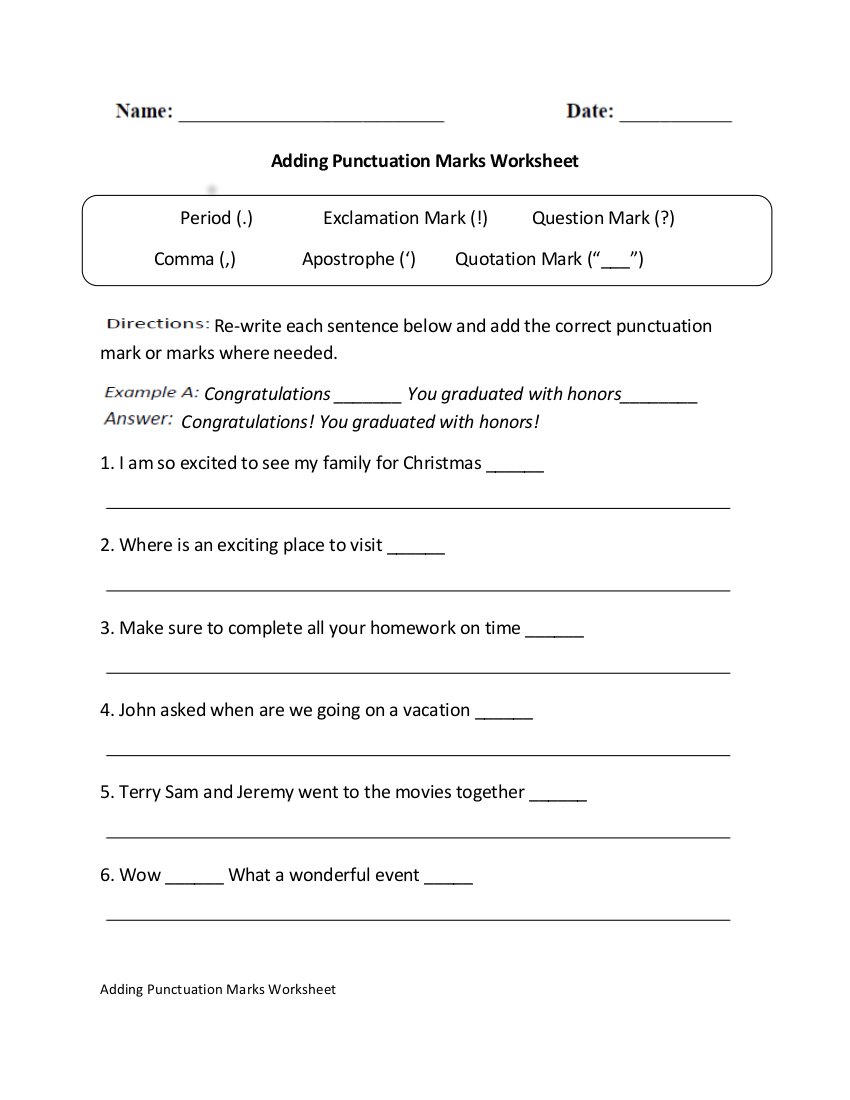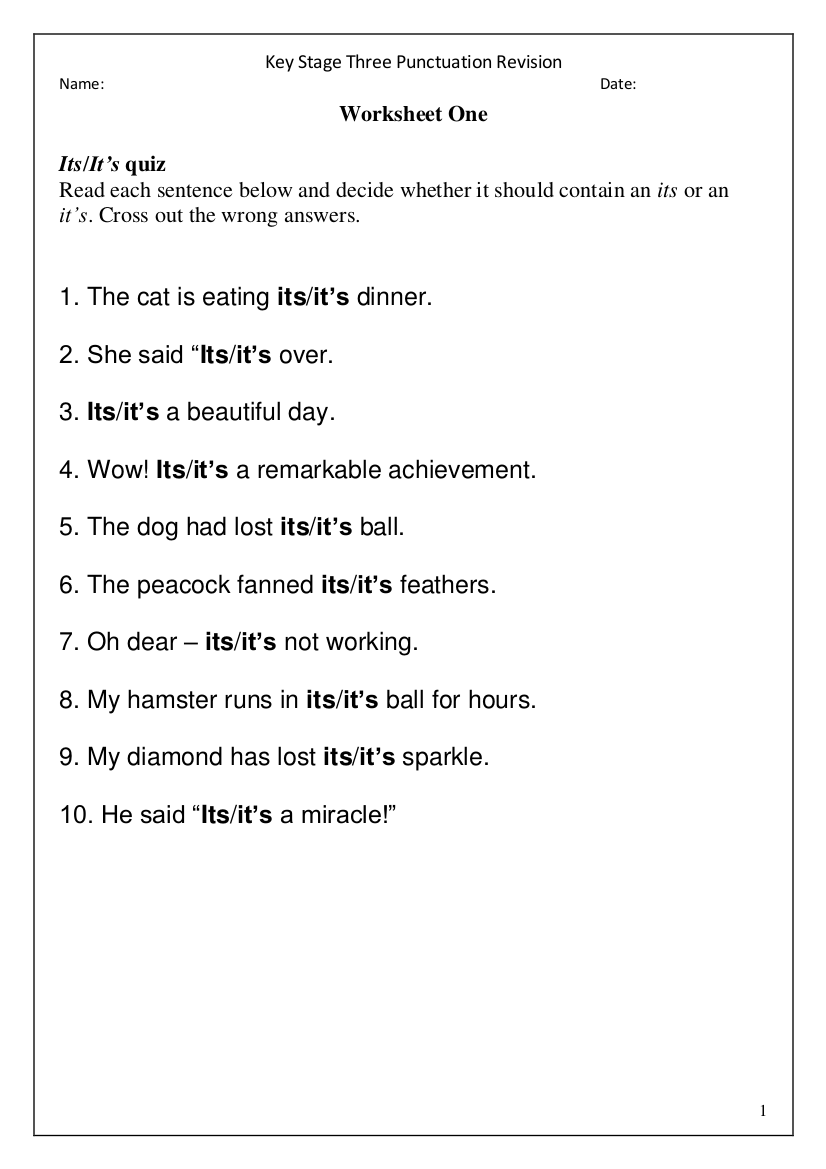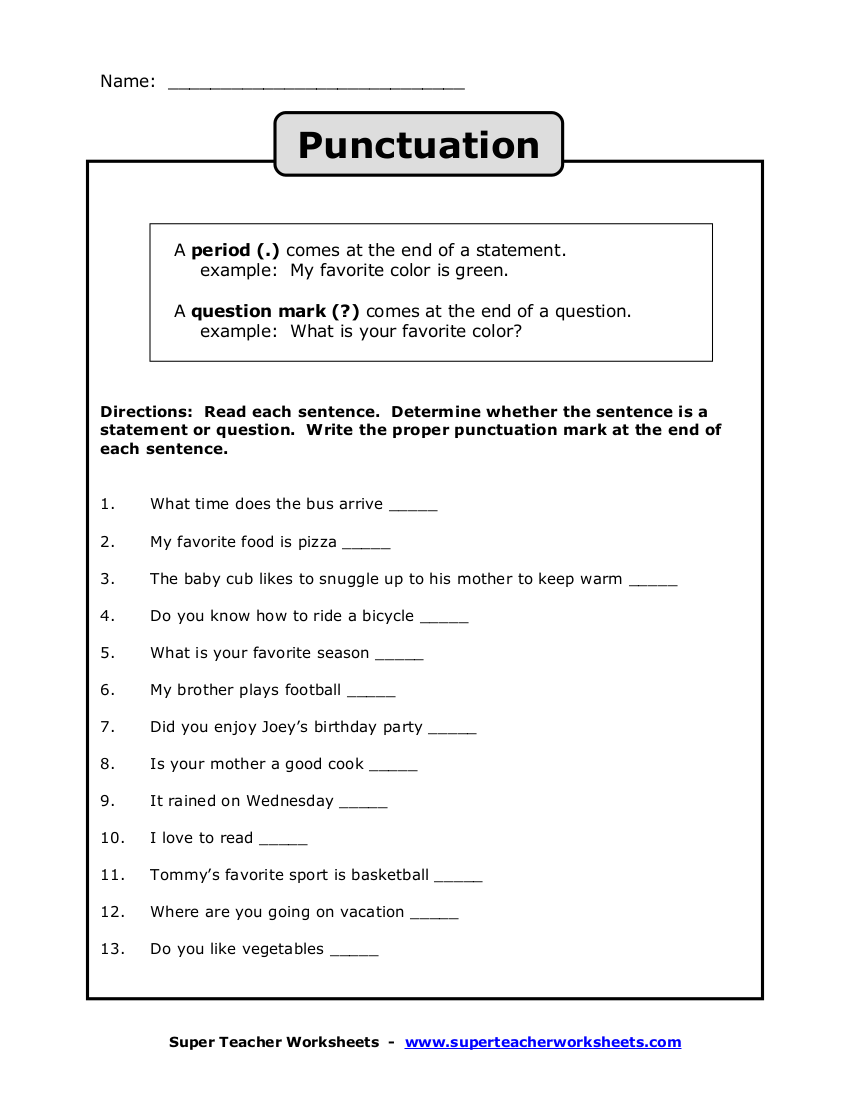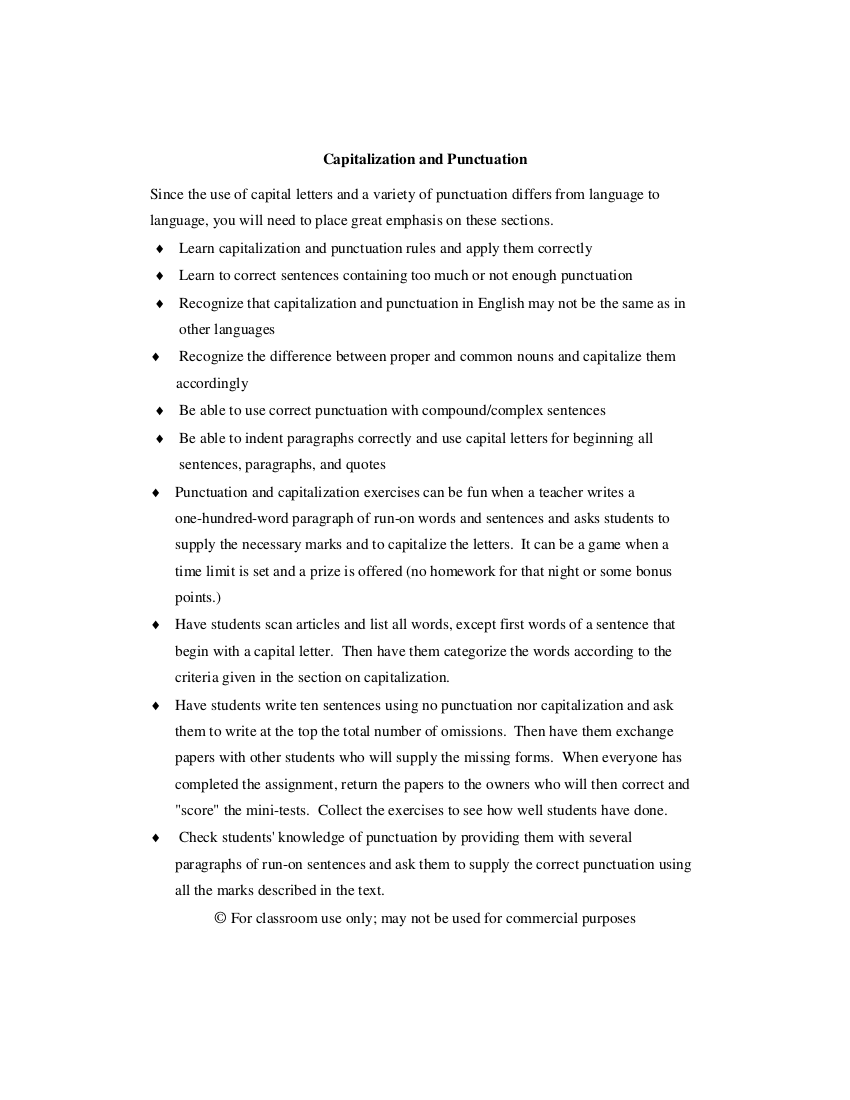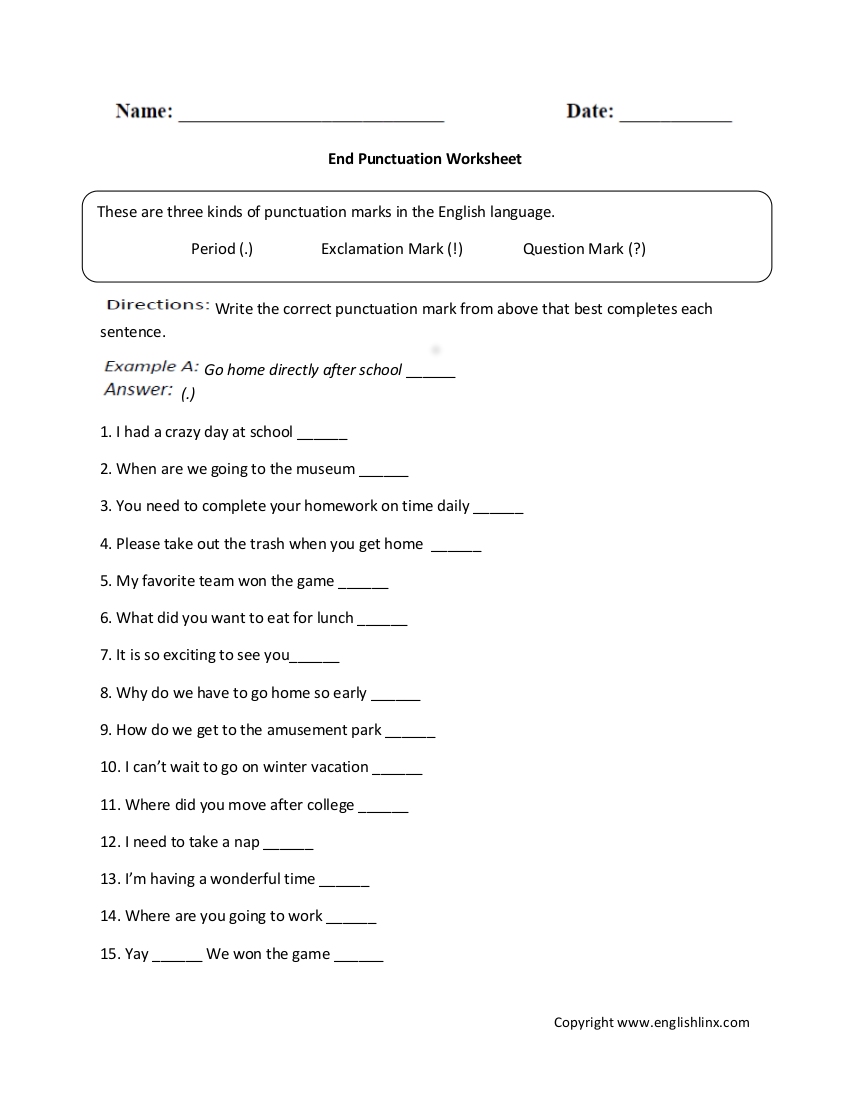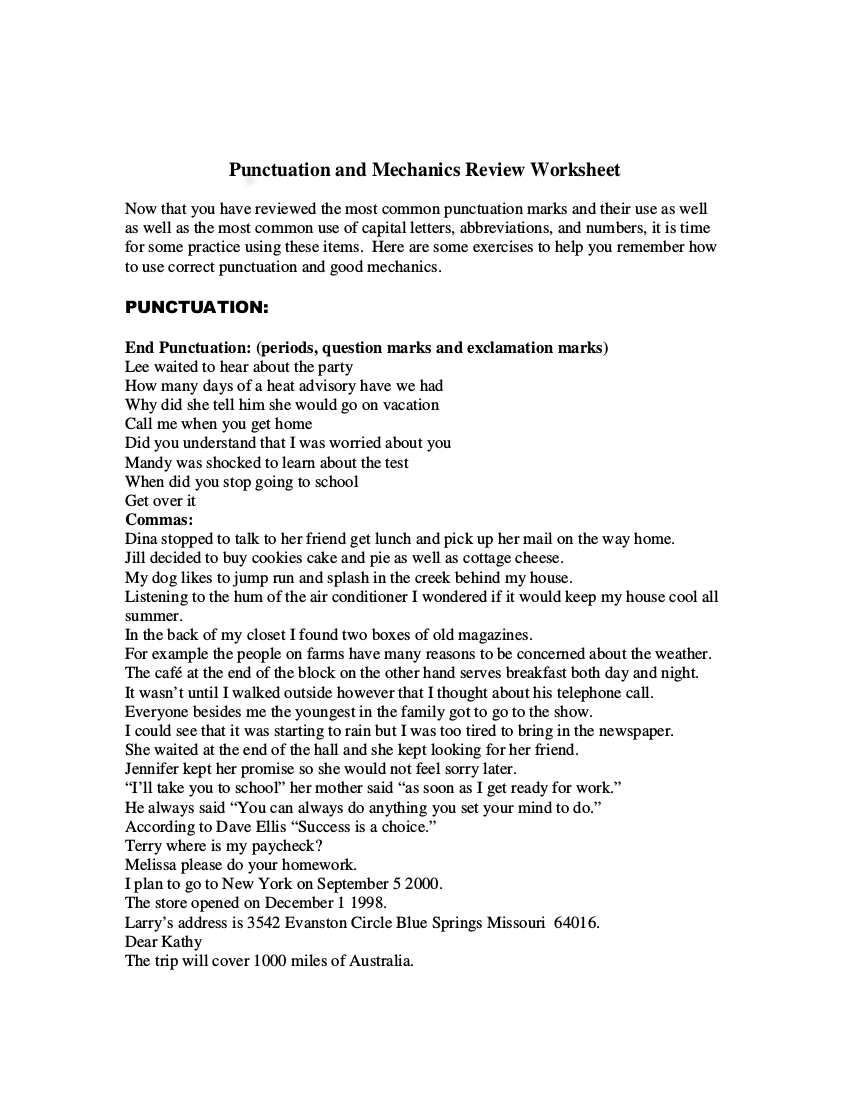10+ Punctuation Worksheet Examples to Download
Imagine the world without people using punctuation marks— unimaginable, right? Even if sentences are the building blocks that are used to construct in written works, without proper placement of punctuation marks, sentences would look bare and they would be impossible to read. In simple terms, punctuation makes the sentence complete.
Even if there are some instance when it is difficult to choose the appropriate punctuation for your text, it is still important that you would know how to correctly punctuate because this could affect the entire meaning of your sentence. Any wrong move and your text would be misinterpreted and will even be void of meaning. If you have a difficulty with punctuating texts, you can make use of the 10 downloadable punctuation worksheets we have provided below. Most of the time, when you are not good at something, you just need to practice and practice some more. You can practice doing correct punctuation with the help of these worksheets.
The Common Punctuation Marks and Its Usage
Punctuation marks are the symbols we use in order to make written language clear and comprehensive. The punctuation marks that are commonly used in the English language are: period, question mark, exclamation point, comma, semicolon, colon, dash, brackets, parentheses, quotation marks, and the ellipsis. Learn more about these fourteen punctuation marks below:
1. The Semi-Colon ( ; )
There are a lot of people who would get confused on how to make use of this punctuation mark. The semi-colon is very effective when you would combine two slightly related clauses or two independent clauses together into a single sentence.
Take this for example:
Rose found the final exams extremely difficult. She was not able to study for the exam a week in advance.
In this sentence, the two sentences are separated by a period. If you read it again, it sounds like that it should be connected even though you can hear a pause between the two sentences. Connecting the two would result into the sentence written below:
Rose found the final exams extremely difficult; she was not able to study for the exam a week in advance.
You can also use a semi-colon in the place of the coordinating conjunction such as for, and, nor, but, or, yet, and so (also called FANBOYS).
Semi-colons can also be used to separate items in a long list. Take this sentence for example:
At the market, I bought fresh carrots, they were very orange; some wilted green leafy vegetables, they were for my health-conscious pet horse; and a fresh ground beef, they were very red in color.
2. The Comma ( , )
Commas are used to add pauses in sentences. This makes writing and reading easier as the sentence is broken into manageable chunks. People would tend to overuse this function of the comma and pepper their texts with a lot of commas when they can use semicolons instead.
Here is an example of how commas are used in sentences:
I made the homework for English, History, Math, Science, and Foreign Language class only in a span of an hour.
3. The Full Stop or Period ( . )
Of all the punctuation marks, the full stop or period is probably the most important. Without the period, you will never know when the sentence would stop. If you are reading a paragraph that does not use a single period, it seems like it’s never-ending and you feel like you are running out of breath.
If you want to look for another example of how periods are being used in writing, then just read the rest of this article.
4. The Colon ( : )
When you need to introduce a group of related words, phrases, lists, names, or even quotations, the colon would be of great help. Here are some examples of sentences that use a colon:
The cranky Corgi only had one thing on its mind the entire time it was barking angrily at me: his toy.
The cranky Corgi had a lot of other things in its mind: dog treats, cuddles, and of course, the toy that was hidden away from him.
The cranky Corgi’s owner had finally given him his toy: “Do not ever throw this in the middle of the road, okay?” He said.
5. The Quotation Mark ( ” ” )
The major use of a quotation mark is to “quote” what someone had said verbatim (word for word). Take this sentence for example:
“Beware of the upcoming typhoon”, the weather forecaster warned on national television.
A single and double quotation mark can also be used in a single sentence. Take this sentence for example:
‘Do you have any idea, he said, what a “typhoon” is?’
6. Ellipsis ( … )
The most common way of using an ellipsis in formal writing is when you have omitted words particularly when quoting someone and you want to shorten the quote using an ellipsis.
Take this for example:
Before she could say something, which was obvious because she comments on almost everything, I stopped her before she could open her mouth.
You can now shorten the quote by replacing some of the words with an ellipsis but you have to make sure that the meaning of the sentence stays intact.
Before she could say something… I stopped her before she could open her mouth.
But in novels, poems, or in other creative writings, an ellipsis functions when the character speaking in the text has trailed off or was unable to finish.
7. The Exclamation Mark ( ! )
If you want to express a strong emotion through writing, then the exclamation mark is the best punctuation mark to use. It is really difficult to express a strong emotion especially in writing. It would be too overwhelming to read if you would capitalize your entire text just to express excitement. Here are some sentence examples that would use an exclamation point to express a strong emotion:
Wow! The thrill ride almost separated my soul from my body.
Read more about the usage of the exclamation point in the article Exclamatory Sentence Examples – Definition & Usage.
Grammar and Punctuation Worksheet Example
Adding Punctuation Marks Worksheet Example
Punctuation Worksheet Example
Sample Punctuation Mark Example
Teacher Punctuation Worksheet Example
Capitalization and Punctuation Worksheet Example
Sample Punctuation Mark Example
Punctuation Revision and Worksheet Example
End Punctuation Worksheet Example
Punctuation and Mechanics Review Worksheet Example
The Common Punctuation Marks and Its Usage (continuation)
8. The Question Mark ( ? )
Basically, this punctuation mark is used when asking questions. Take for example:
What will I eat later for dinner?
Do I have a chance to be with her?
Read more about the usage of the question mark in the article Interrogative Sentence – Definition & Examples.
9. Parenthesis ( ( ) )
In formal writing, parentheses provides supplementary information that is not that essential to the given sentence but the readers will surely gain something or benefit from it. In informal writing or other forms of creative writing, parentheses are used when the thoughts of the characters of the story are being shown by the writer to his or her readers. For example:
He checked the schedule (after staring for five minutes at the scheduled trips for the day) that his plane trip was still tomorrow.
10. Hyphen ( – )
This punctuation mark is used to join words. The hyphen is also used to separate syllables of a single word while it is prohibited to add spaces before or after a hyphen. The hyphen is commonly used in joining two or even more compound adjectives such as finely-tuned, off-limits, and state-of-the-art.
11. Apostrophe ( ‘ )
Apostrophes are used to show possession. It is added between the word (i.e. singular noun or an indefinite pronoun) and the letter ‘s’.
A lot of people would get confused on how to make plural nouns into possessive form. But it’s pretty easy; all you have to do is to add an apostrophe right after the letter ‘s’. Keep in mind that the placement of the apostrophe depends on the number of nouns, and that using an apostrophe with possessive personal pronouns should be avoided.
This punctuation mark is also used in contracting two words and is used to mark where the missing or omitted letter/s would have been placed. This punctuation mark is also used to form strange plurals like (for example, Dot the i’s and cross the t’s).
12. Slash ( / )
There are actually two types of slashes, the backslash () and a forward slash (/). The backslash is mostly used for computer coding while the forward slash is used in writing. The use of a slash depends on the context and could mean a variety of things. After a slash, adding a space should be observed unless it is used to abbreviate words.
Slashes can be used to separate lines in a prose, poem, song, or play. Slashes are used to indicate the coordinating conjunction or used in formal/informal texts. Slashes are also used to form abbreviations and shorten words/phrases, although this usage is not applicable in informal writing. For example: without = w/o, within = w/in, care of = c/o, and air conditioning = a/c. Slashes are also used to indicate the connection and even the conflict between two words or phrases that are being used in a sentence. Lastly, slashes are used to denote dates and fractions such as 12/12/2012, 3/4, etc.
13. Brackets ( [ ] )
A bracket is defined as the punctuation mark that is used exclusively within a quoted material. Brackets are actually interruptions and when we see them in a quoted material, we know that this is not actually mentioned by the person who is quoted but by the person who wrote the article. This is because the writer would like to explain or even comment on the quoted text without affecting the verbatim of the quoted text.
Importance of Punctuation
Punctuation is highly important especially when it comes to writing. Punctuation enables us to write clearly and effectively. Since we cannot hear the words that we speak, punctuation plays a crucial role in the way we understand a text. When we speak, there are a lot of ways to get the meaning of our words across; be it stress, intonation, rhythm, and pauses. But when it comes to writing, however, we cannot express the stress, intonation, rhythm, and the pauses into writing and only punctuations can do that.
Any misplacement of a punctuation mark can lead to a lot of misinterpretations and would convey an entirely different meaning to the reader.
Take this classic example: A woman without her man is nothing
Now let’s apply different punctuation marks and see how punctuation could affect the meaning of the sentence:
A woman, without her man, is nothing.
A woman: without her, man is nothing.
And another classic example: Let’s eat Grandma!
Now let’s put on a comma and see how it could affect the meaning of the sentence:
Let’s eat, Grandma!
The thing about punctuation marks is that it could make a whole lot of difference in sentences. That is why it is really important that you would know and master how to use punctuation marks so that you will be able to create a piece of writing that conveys the correct message.


